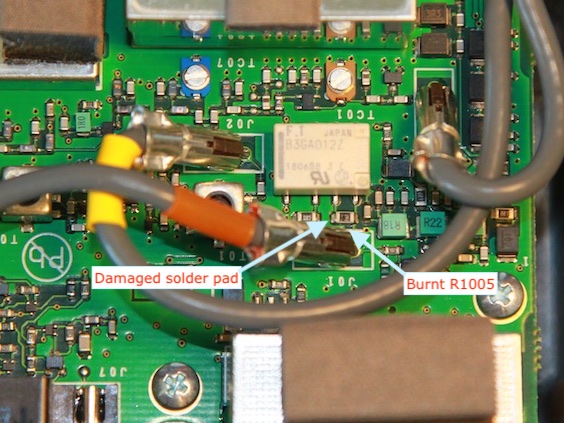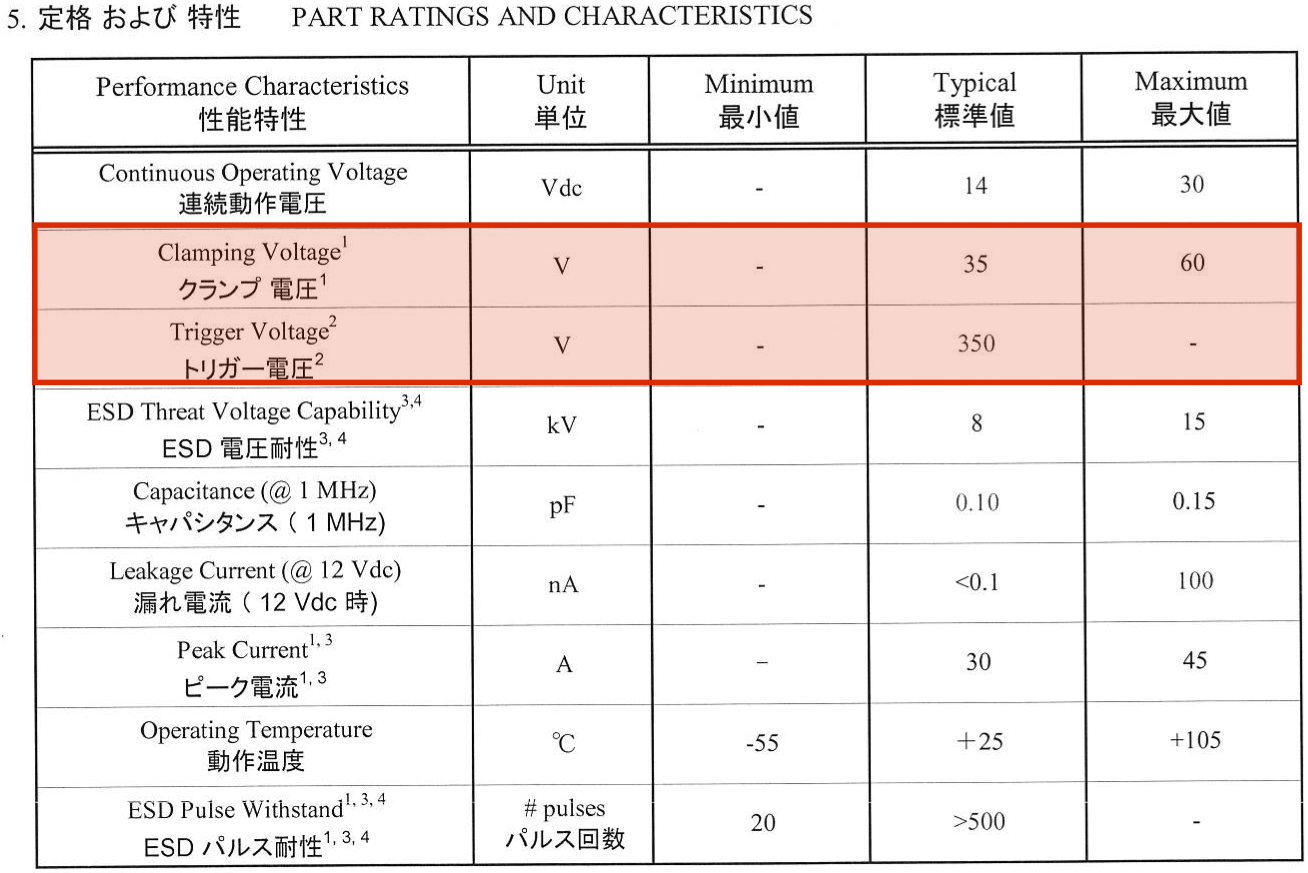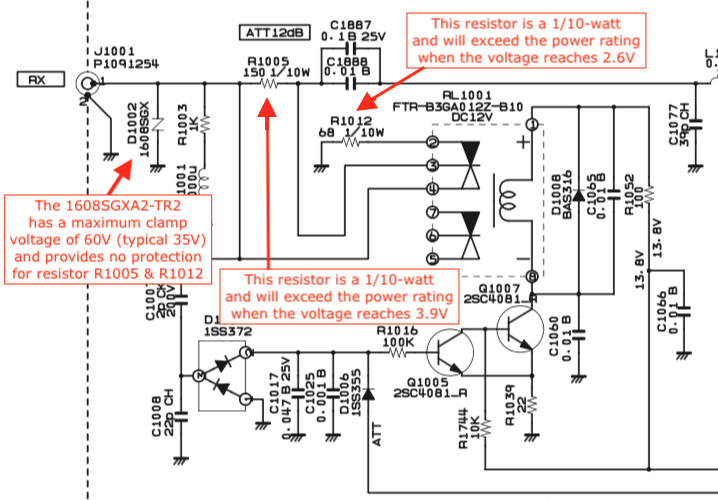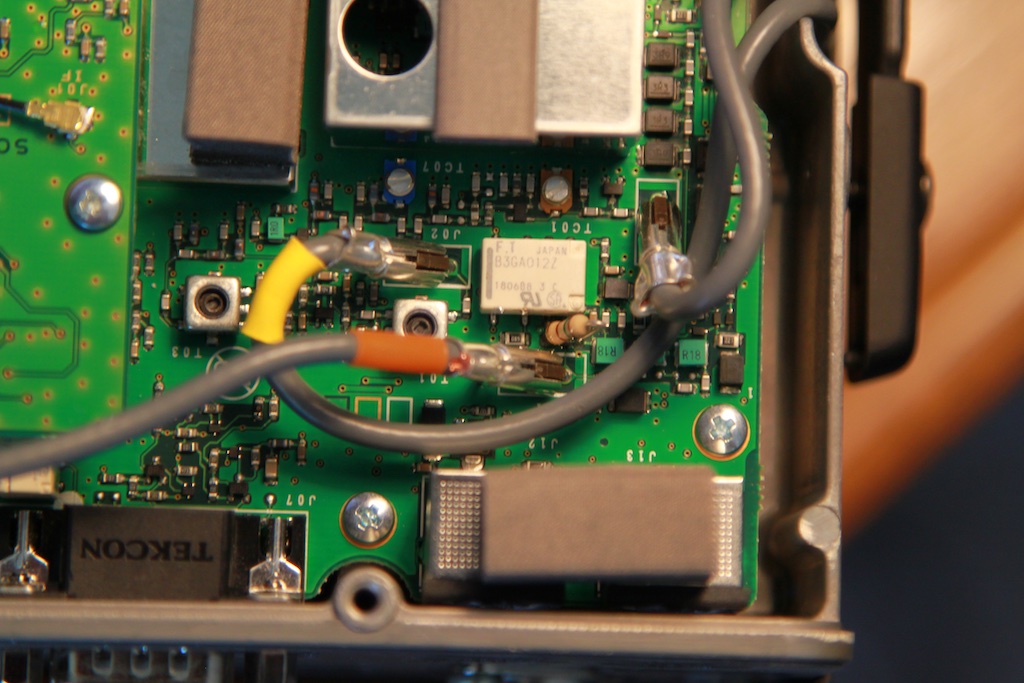Update (29 Nov 2020): This article has been referenced in a YouTube video by Mike (M0MSN). You can view that video, and the repair done by Mike, by clicking HERE. Thank you Mike!
One of our group recently acquired a Yaesu FT-991A. This radio is being used in a station configuration that would be considered a multi-operator station. Some of the other radio equipment in this station is capable of operating at the full legal power limit for HF operations.
Initial receive performance of the FT-991A was nominal, but after other station equipment had transmitted at a high power level, the FT-991A receiver failed. The failure mode was as follows:
- Receiver operation is normal when the Attenuator feature is disabled.
- Receiver operation fails (no receive and a very quiet noise-floor) when the Attenuator feature is enabled.
- IPO operation enables the Attenuator and results in the same receiver failure mentioned immediately above.
The following image depicts the relevant section of the FT-991A receiver front end schematic. It can be seen that the Attenuator circuit if formed with a 150Ω and 68Ω resistor voltage divider that is comprised of R1005 and R1012. When the Attenuator is disabled, the 150Ω R1005 is shorted by relay contacts and the 68Ω R1012 is removed from the circuit by relay contacts. The failure mode is due to the 150Ω R1005 opening up and breaking the signal path.
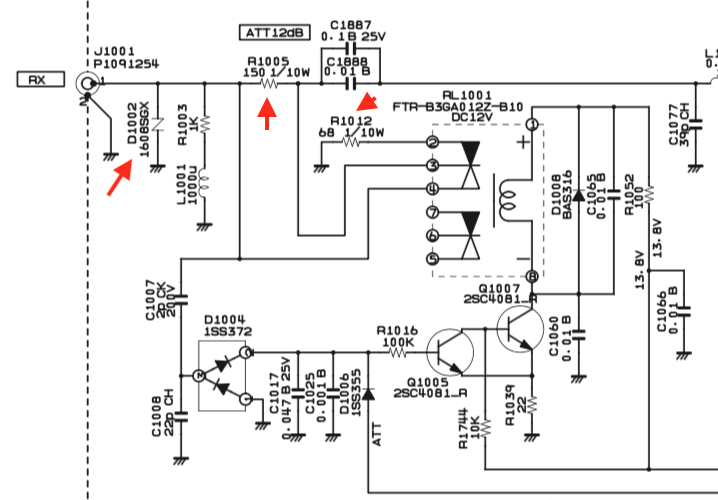
The surge protector at D1002 (Mfr. P/N 1608SGXA2-TR2) is expected to protect the resistor divider of R1005 and R1012 from experiencing voltages that exceed the 1/10-watt rating of both of these resistors, and it was initially suspected that the surge protector may have failed.
